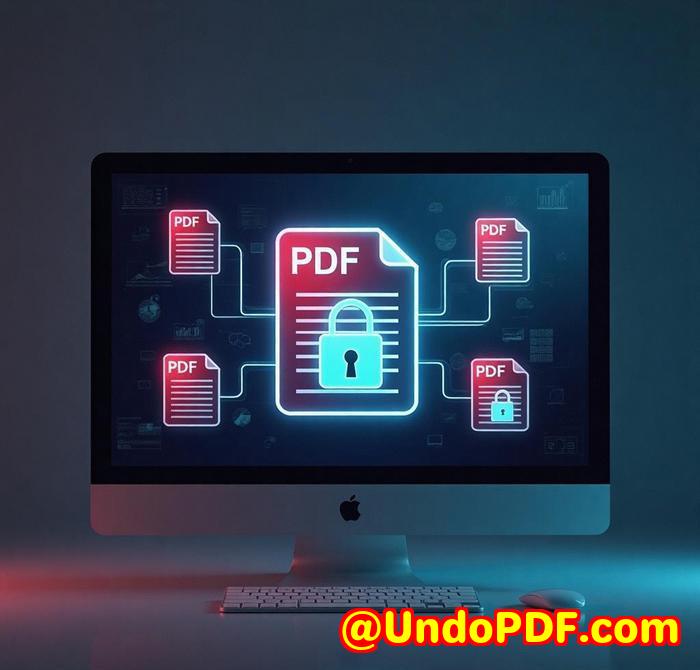How to Use Java Command Line Tools to Add Secure Watermarks to Confidential PDF Reports
Every time we sent out a confidential client report, I worried.

What if someone forwarded it? Printed it? Shared it somewhere it shouldn’t be?
I’d slap a weak watermark on the PDF, but let’s be realit was more for show than security.
The issue?
Most watermarking tools are either painfully manual or way too rigid. We needed something scriptable, something secure, and something that didn’t break every time we updated our workflow.
That’s when I stumbled on VeryUtils Java PDF Toolkit (jpdfkit) Command Line.
This thing isn’t just another PDF utility. It’s a lean, Java-based command-line tool that runs on Windows, macOS, and Linux. It works directly from the terminal, no GUI fluff, and handles every PDF manipulation task you can think of. Watermarking, encryption, merging, splitting, rotatingyou name it.
Let me show you how it turned our PDF headaches into a smooth, automated process.
The Tool That Solved Our Watermarking Woes
I first tested it on a batch of weekly financial reports.
Here’s what made it a no-brainer for our ops:
-
Command-line simplicity: One command to watermark an entire PDF folder.
-
Security built-in: Add watermarks + encryption in one go.
-
Cross-platform: We’ve got teams on Windows and Linux. It just works.
And most importantly, it didn’t require installing Adobe Acrobat or fiddling with GUIs.
Here’s the actual command we used:
Just like thatevery page in our confidential report had a semi-transparent watermark slapped across it.
3 Features That Saved My Sanity
Let’s break this down a bit. Here are three features I use all the time:
1. Background and Foreground Watermarking
You can overlay or underlay any PDF or image as a watermark.
-
Want a grey “CONFIDENTIAL” stamp across every page?
-
Need a legal disclaimer footer on each report?
Just run:
or for front-layer stamps:
Super flexible, no manual dragging-and-dropping nonsense.
2. PDF Encryption on the Fly
Adding a watermark is great, but encryption takes it up a notch.
You can add user and owner passwords, control printing rights, and block content copyingall from the same script:
Boom. PDF is now locked tighter than our budget spreadsheet.
3. Batch Processing for Real-World Chaos
This is what sealed the deal for me.
You can wildcard a whole set of reports and watermark them in one go:
No loops, no manual triggers. Just one line and I’m done.
Who This Is For (and Who It’s Not)
If you’re a solo freelancer sending one-off PDFs, this might be overkill.
But if you’re in:
-
Finance
-
Legal
-
Compliance
-
Enterprise IT
…and you’re dealing with hundreds of sensitive reports a week, this is gold.
Especially if your PDFs need to be watermarked, encrypted, merged, or rotated automatically.
Dev teams love it too. Since it’s Java, it works with any JVM languageClojure, Scala, Groovy, etc.
Why I Ditched Other Tools
I’ve tried the usual suspectsPDFtk, qpdf, online watermark tools.
Here’s what bugged me:
-
PDFtk lacks deep watermarking features.
-
Online tools? Total non-starter. No security, no batch processing.
-
Adobe Acrobat? Too bloated. Not scriptable enough for real automation.
jpdfkit hit the sweet spot. It’s lightweight, command-line driven, and doesn’t require user interaction. Perfect for headless systems.
Here’s the Bottom Line
VeryUtils Java PDF Toolkit Command Line solves one key problem:
How to add secure watermarks to confidential PDF reports without wasting time or exposing your files.
It’s simple. It’s fast. It’s reliable.
I’d recommend this to anyone handling sensitive documents who needs to automate PDF security workflows.
Try it out here:
https://veryutils.com/java-pdf-toolkit-jpdfkit
Need Something More Custom?
VeryUtils also builds custom solutions if you’ve got a niche requirement.
Whether it’s PDF security, printer driver interception, OCR, barcode generation, or a bespoke document workflowyou name it.
They’ve built tools using:
-
Java, C++, Python, PHP, C#, .NET
-
Virtual Printer Drivers (generate EMF, PDF, TIFF)
-
API hooks to monitor file and printer activities
-
Cloud platforms for conversion, viewing, and e-signatures
If you’ve got an edge-case need or a wild PDF workflow in mind, they’ll likely build it.
Hit them up here:
http://support.verypdf.com/
FAQs
Q: Can I add watermarks to multiple PDFs in one go?
Yes, batch watermarking is fully supported via wildcards or looped commands.
Q: Does it work on Linux servers?
Absolutely. It’s a Java-based tool, so it runs anywhere with JVMWindows, macOS, Linux.
Q: Can I control watermark position and opacity?
Yes, you can customise watermark templates and overlay them exactly where and how you want.
Q: Is Adobe Acrobat required?
Nope. This tool is completely standalone.
Q: Can it also encrypt the PDF after watermarking?
Yes. You can add password protection and permissions in the same command as watermarking.
Tags
pdf watermarking
secure pdf command line
java pdf toolkit
batch watermark confidential pdf
veryutils jpdfkit